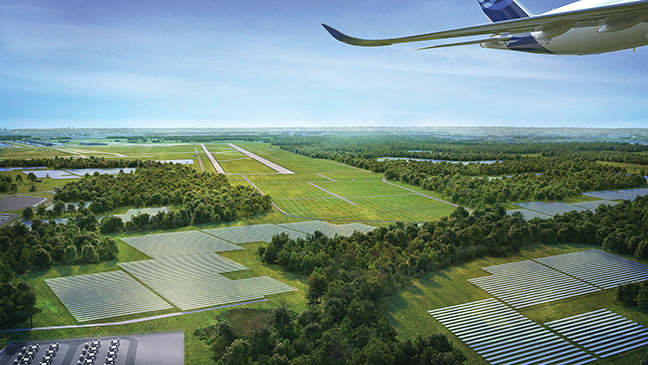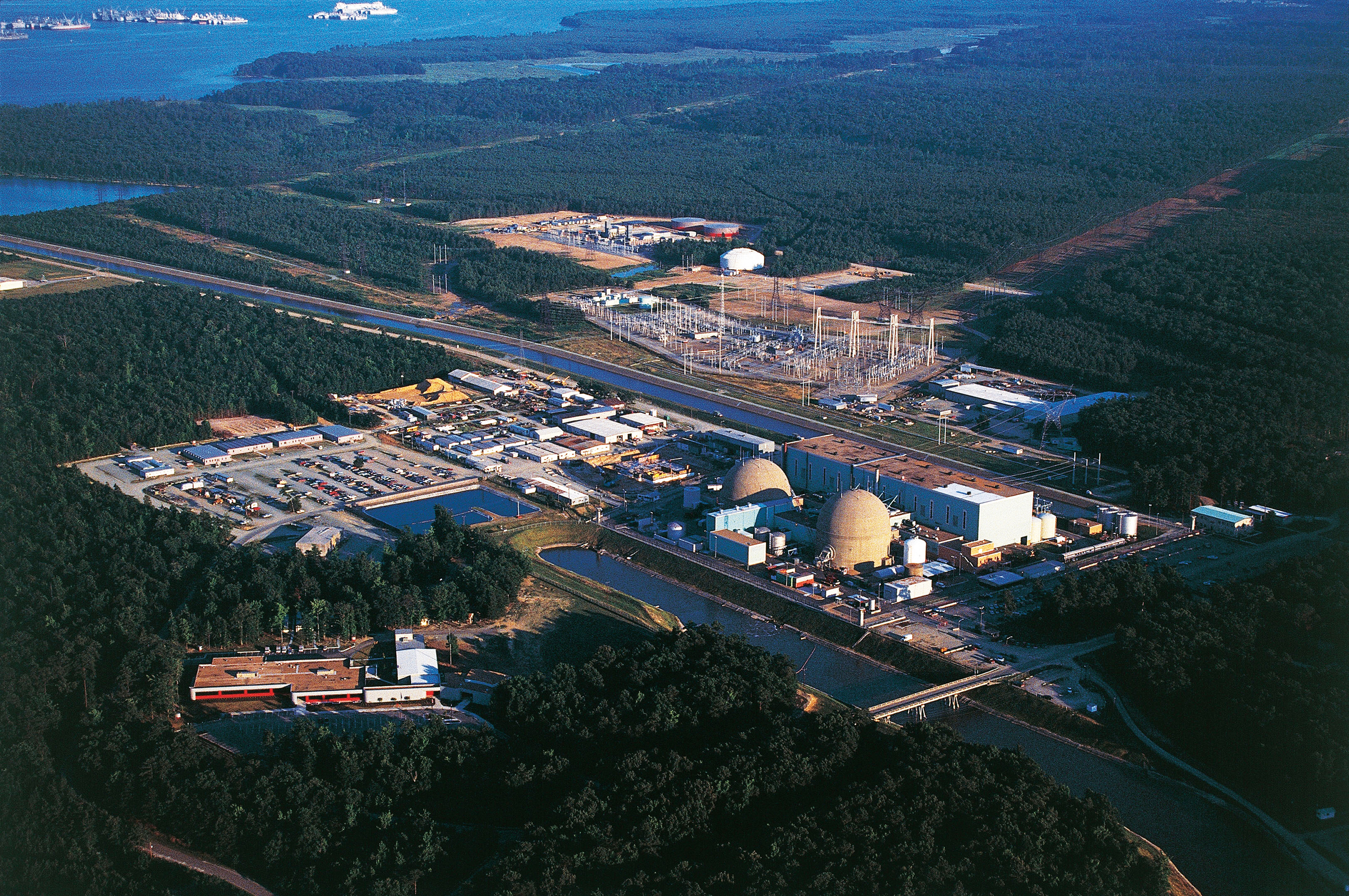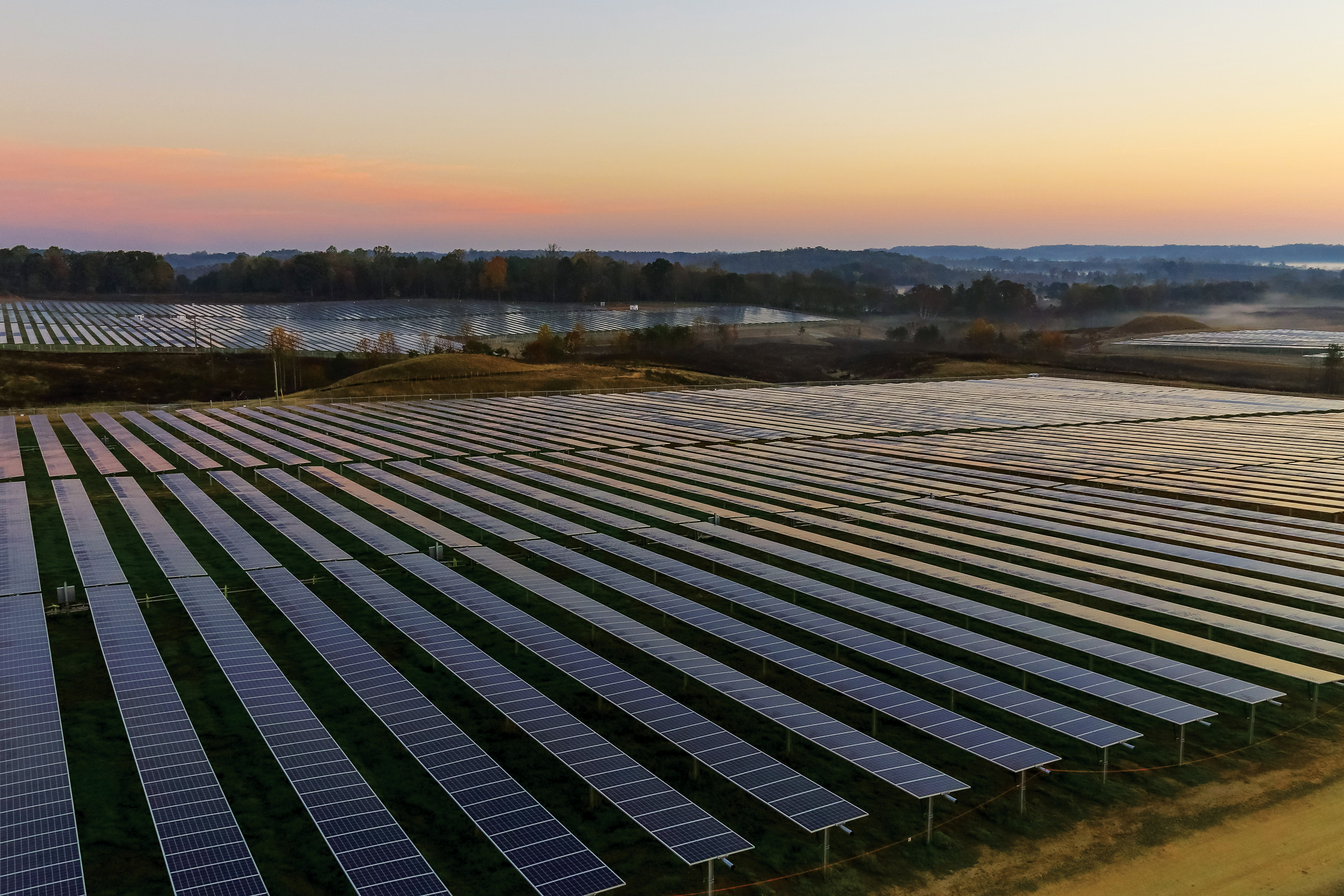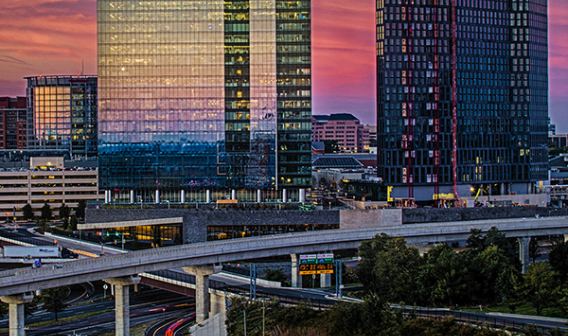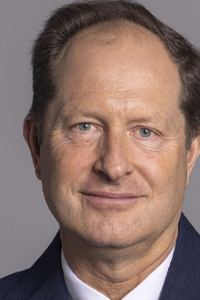Preparing to Meet Virginia’s Long-Term Energy Needs
The Commonwealth’s revamped energy plan aims to build capacity through flexibility, technological innovation
The best way to conceptualize Virginia’s energy ambitions is to look to its past of supporting one of the most power-intensive industries in existence. “Data Center Alley” in Loudoun County is the world’s largest concentration of hyperscale data centers — its capacity exceeds that of either China or Europe. Virginia’s primacy in the data center market can be traced back to 1992, when the National Science Foundation tabbed a group of network providers in the Washington, D.C., area as one of the four original Network Access Points through which the nascent internet would be run. Five years later, America Online located its headquarters and initial data centers in Loudoun County.
Today, Data Center Alley is home to more than 160 data centers occupying 18 million square feet. The area requires massive energy to power and cool computers, servers, and virtual machines, and Virginia is looking to capture even more of that market. Fueled in part by plans to add more hyperscale data centers, the demand for electricity in Virginia is forecast by Dominion Energy to grow 5% annually, more than double its pace during the decade before the pandemic.
Anticipating Future Needs
With that projected growth, Virginia can’t afford to leave any energy stone unturned. That’s where the Commonwealth of Virginia’s 2022 Energy Plan comes in, supplementing the standard pillars of the “three-legged stool” model — reliability, affordability, and environmental stewardship — with the additional guiding principles of innovation and competition.
“We are working on a lot of projects simultaneously,” said Glenn Davis, director of the Virginia Department of Energy. “We don’t want to become California. We don’t want to have rolling blackouts.”
Solar. Offshore wind. Small modular advanced nuclear reactors. Natural gas. Hydrogen energy made by heating water with natural gas (blue hydrogen) or renewable energy (green hydrogen). All options are on the table because Virginia’s energy demands are rising, Davis explained.
“It’s important that stakeholders in the conversation don’t leave out the demand part of the equation,” said Virginia Deputy Secretary of Commerce and Trade Chelsea Jenkins. “We need to look realistically at all generation solutions, their commercial viability and cost to taxpayers, and understand how they work together to provide 24/7/365 energy to Virginians and businesses.”
In the 15 months since Gov. Glenn Youngkin released the plan, officials have sought partners to increase energy production. While generating more energy is a focus, it’s not the only goal. The Commonwealth is also focused on adding jobs for the future and creating supply chains here to diversify and grow energy generation in Virginia.
Since the release of the energy plan, state officials have sought partners and built relationships as far away as Europe to build both hydrogen generation and a domestic supply chain for parts to support that process.
“Given the once-in-a-lifetime opportunities that are resulting from changes to the grid and energy sectors transitioning, we are focused on developing a globally competitive supply chain,” Jenkins said. “Advanced nuclear is a great example — the projected U.S. and global demand for new nuclear is staggering. We have already built a great foundation in Virginia to remain highly competitive as a global supplier of products and services, and we intend to continue competing to win domestic and international investments.”
A green hydrogen production facility is in the planning stage at the Tech Center Research Park in Newport News. Its location will allow it to be powered, eventually, by 176 14.7-megawatt wind turbines and three offshore substations at Coastal Virginia Offshore Wind, located 27 miles off the coast of Virginia Beach in a 112,800-acre commercial lease area in the Atlantic Ocean.
On track to open later this year, the offshore wind farm could power as many as 660,000 homes by 2026. That construction is just one of the tangible results that should start to roll out in 2024 after more than a year of investigating opportunities.
“The year 2024 will be very exciting across a number of sectors,” Davis said.
'Both/And' Instead of 'Either/Or'
Unlike a previous energy plan that aggressively phased out nonrenewable energy, the 2022 plan keeps all avenues open, including firm baseload generation that’s always available and not intermittent.
Unless Virginia increases its baseload, Davis said, renewable energy alone won’t keep pace with energy demands — demands that are growing faster than in any other state, in part due to the Commonwealth’s massive data center industry.
That means Virginia will use natural gas to separate hydrogen molecules from water for energy and develop small modular reactors (SMR). “The governor’s energy plan has put Virginia on the path to being a leader in SMRs,” Davis said.
The goal of building supply chains in Virginia isn’t limited to hydrogen and advanced nuclear — the Commonwealth wants partners who pave the way to manufacturing opportunities here for every type of power generation, from wind turbine blades to fuel cells and batteries that store energy to be used when demand peaks.
As of late 2023, Southwest Virginia was in the running to build one of 20 federal technology hubs nationwide, allowing the Commonwealth to apply for up to $75 million of funding after it submits more detailed plans to the U.S. Economic Development Administration. Looking ahead to 2024, Davis thinks the Virginia Nuclear Energy Consortium will find partners, too.
While most of the expected increase in demand for energy will be driven by data centers, some additional demand will come as drivers switch from vehicles powered by gas to those powered by batteries, he said. That’s even more true if Virginia sticks with previous plans to ban the sale of gas-powered vehicles in 2035. While such a plan might work in a state that already has a lot of charging stations, the infrastructure for it is lacking in Virginia, Davis said.
In the meantime, the state is aggressively pursuing solar generation. Virginia is seeking $250 million through an Environmental Protection Agency program called “Solar for All” that will commit $7 billion across the country for residential solar, enabling millions of low-income households to access affordable and clean solar energy.
“The more residential solar that’s produced, the less demand there will be on the grid,” Davis said.
The priority of both the 2020 and 2022 energy plans remains the same: to anticipate future energy challenges and build the capacity to mitigate them. That means using data about expected demand to create goals, then using flexible means to get there.







